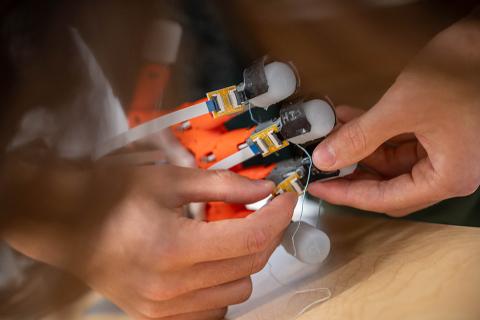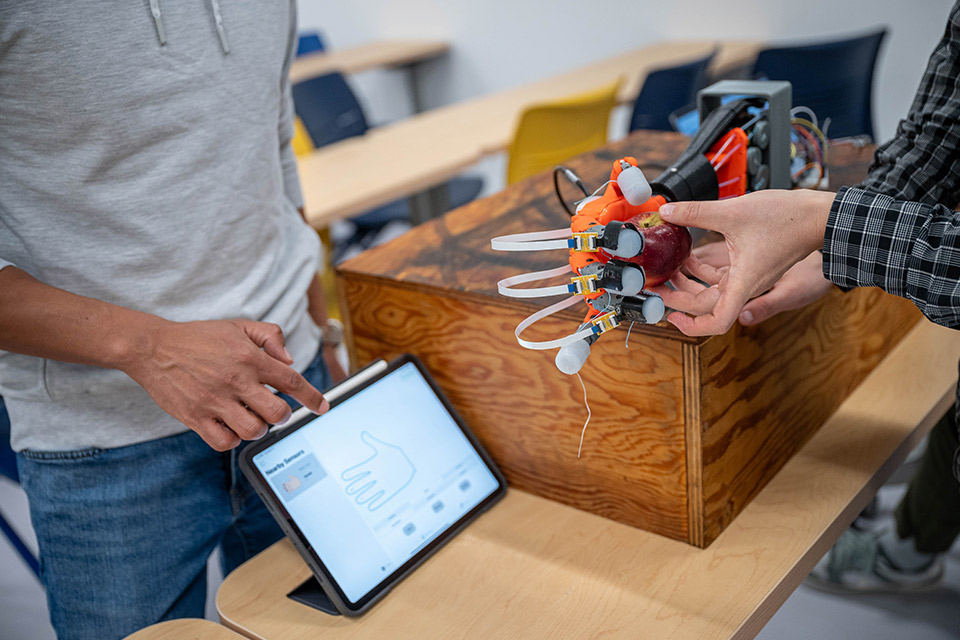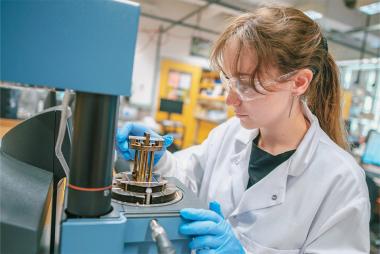UBC engineers develop breakthrough ‘robot skin’ in collaboration with Honda researchers

October 26, 2023
Smart, stretchable and highly sensitive, anew soft sensordeveloped by UBC Engineering and Honda researchers opens the door to a wide range of applications in robotics and prosthetics.
When applied to the surface of a prosthetic arm or a robotic limb, the sensor skin provides touch sensitivity and dexterity, enabling tasks that can be difficult for machines such as picking up a piece of soft fruit. The sensor is also soft to the touch, like human skin, which helps make human interactions safer and more lifelike.
“Our sensor can sense several types of forces, allowing a prosthetic or robotic arm to respond to tactile stimuli with dexterity and precision. For instance, the arm can hold fragile objects like an egg or a glass of water without crushing or dropping them,” said study authorDr. Mirza Saquib Sarwar, who created the sensor as part of his PhD work inelectrical and computer engineeringat UBC’s Faculty of Applied Science.
Giving machines a sense of touch
The sensor is primarily composed of silicone rubber, the same material used to make many skin special effects in movies. The team’s unique design gives it the ability to buckle and wrinkle, just like human skin.
“Our sensor uses weak electric fields to sense objects, even at a distance, much as touchscreens do. But unlike touchscreens, this sensor is supple and can detect forces into and along its surface. This unique combination is key to adoption of the technology for robots that are in contact with people,” explainedDr. John Madden, senior study author and a professor of electrical and computer engineering who leads theAdvanced Materials and Process Engineering Laboratory(AMPEL) at UBC.
The UBC team developed the technology in collaboration with Frontier Robotics, Honda’s research institute. Honda has been innovating in humanoid robotics since the 1980s, and developed the well-knownASIMOrobot. It has also developed devices to assist walking, and the emergingHonda Avatar Robot.
“Dr. Madden’s lab has significant expertise in flexible sensors and we’re happy to collaborate with this team in developing tactile sensors that can be applied to robots,” said Mr. Ishizaki Ryusuke, one of the study’s lead authors and chief engineer at Frontier Robotics.

Practical and scalable
The researchers say the new sensor is simple to fabricate, which makes it easy to scale to cover large surface areas and to manufacture large quantities.
Dr. Madden noted that sensors and intelligence are making machines more capable and lifelike, increasingly allowing people to work and play alongside them, but much more can be achieved.
“人类皮肤感应点一百倍s on a fingertip than our technology does, making it easier to light a match or sew. As sensors continue to evolve to be more skin-like, and can also detect temperature and even damage, there is a need for robots to be smarter about which sensors to pay attention to and how to respond. Developments in sensors and artificial intelligence will need to go hand in hand.”
The study was published yesterday in Springer Nature's journalScientific Reports.



